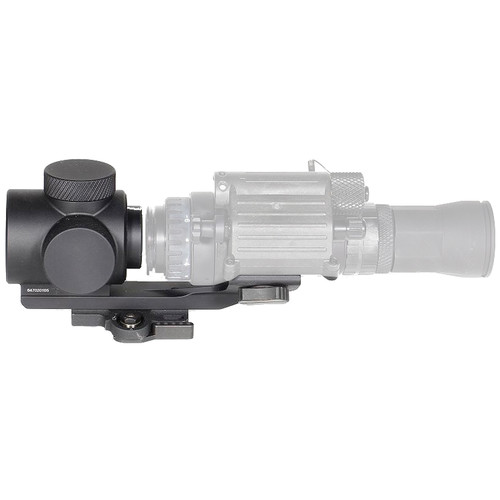There seems to be some confusion about how "real" clipons whether thermal or i2, come to be "collimated" ...
The trick is done with prisms ... sometimes called "risley prisms" ... these sit on the rear end of the device and when properly rotated ... the device in question is said to have been "collimated". This requires the use of a piece of equipment called a "collimating table". The result is a device, which, within tolerance, will shift the image as required, to align the optical paths of the clipon and the day scope.
Note, that "real" clipons, such as the PVS-30 or the UTC-x do not have external or menu adjustabilty for boresight. If you mount the clipon and the day scope so that the offsets are within tolerance, you will be dead on ... out to 900 yards, in my experience, with both the UTC and the PVS-30. The tolerance for the PVS-30 is at least 0.2 inches and for the UTC at least 0.1 inches ....
==
"wanna be" clipons ... do not have these risley prisms and hence by definition, cannot be collimated. For those sort of widgets, you must line them up with the day scope, "exactly" if possible ... and or use menu driven adjustments to try to get things lined up. And such alignment might work within a certain tolerance of distance ... such as between 50 to 150yds ... but not at any distance ... such as out to 900yds.
==
The real clipons are expensive for a reason ... and risley prisms that have been collimated on a colliating table are a part of that cost. They are what make devices such as the PVS-30 and the UTC "magic" and able to be moved from rifle to rifle with no adjustments.

https://www.lens.org/lens/patent/175-421-927-693-087
https://www.photonics.com/Article.aspx?AID=25652
The trick is done with prisms ... sometimes called "risley prisms" ... these sit on the rear end of the device and when properly rotated ... the device in question is said to have been "collimated". This requires the use of a piece of equipment called a "collimating table". The result is a device, which, within tolerance, will shift the image as required, to align the optical paths of the clipon and the day scope.
Note, that "real" clipons, such as the PVS-30 or the UTC-x do not have external or menu adjustabilty for boresight. If you mount the clipon and the day scope so that the offsets are within tolerance, you will be dead on ... out to 900 yards, in my experience, with both the UTC and the PVS-30. The tolerance for the PVS-30 is at least 0.2 inches and for the UTC at least 0.1 inches ....
==
"wanna be" clipons ... do not have these risley prisms and hence by definition, cannot be collimated. For those sort of widgets, you must line them up with the day scope, "exactly" if possible ... and or use menu driven adjustments to try to get things lined up. And such alignment might work within a certain tolerance of distance ... such as between 50 to 150yds ... but not at any distance ... such as out to 900yds.
==
The real clipons are expensive for a reason ... and risley prisms that have been collimated on a colliating table are a part of that cost. They are what make devices such as the PVS-30 and the UTC "magic" and able to be moved from rifle to rifle with no adjustments.
https://www.lens.org/lens/patent/175-421-927-693-087
https://www.photonics.com/Article.aspx?AID=25652


